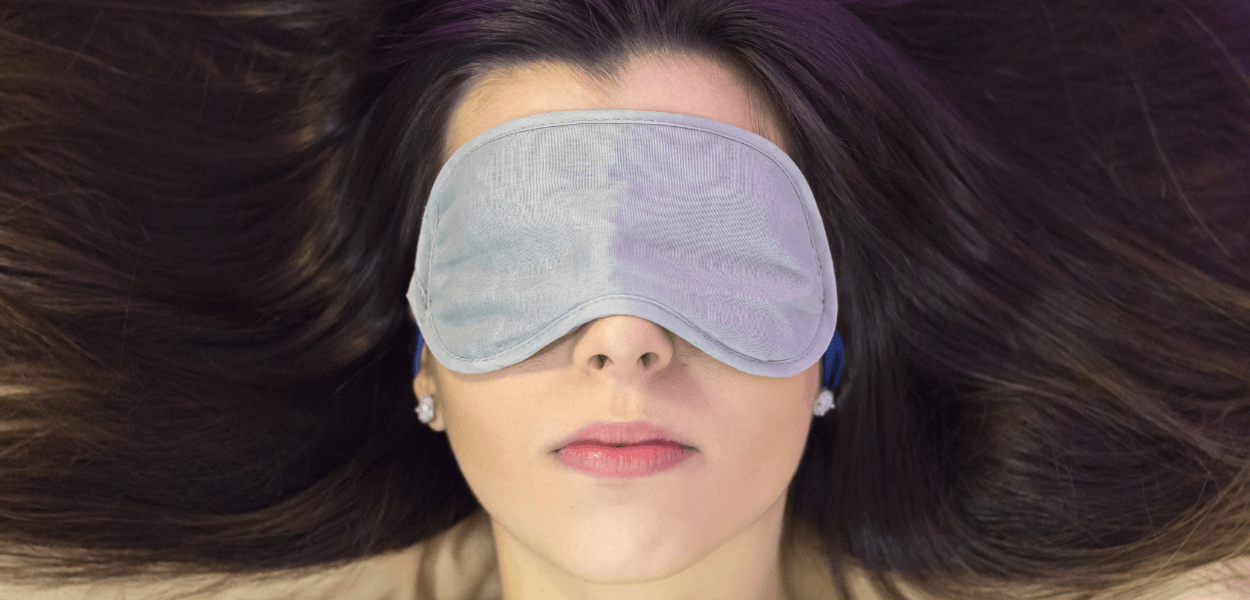Learn about three common over-the-counter dry eye remedies and how to use them.
Chronic dry eye affects up to 50% of the world’s population.1 Dry eye syndrome isn’t just uncomfortable; it can measurably decrease quality of life. If left untreated, even mild cases have the ability to turn severe, causing lasting damage to the surface of your eyes.
We recommend our readers get started on self-care treatment at the first sign of symptoms. Fortunately, effective self-care products are easy to get your hands on — they can be purchased online and or at your local pharmacy, and they don’t require a prescription.
Artificial Tears
Artificial tears are a simple, straightforward treatment for dry eyes that work by lubricating the eyes and decreasing dryness.2 If you have issues with the availability, quality, or quantity of your tears, artificial tears fill the gap. They’re among the most common treatments for dry eye.
Quick Facts
- Lubricates the eyes
- May cause temporary blurred vision
- Available with or without preservatives, and in high or low viscosity
Finding the Artificial Tears That Are Right For You
There are many kinds of artificial tears, so it’s important to find the ones that work for you and the underlying conditions that are causing your chronic dry eye.
Artificial tears come in varying levels of viscosity (thickness). Low viscosity tears are thinner, with the texture of eye drops, while high viscosity tears are closer to a gel-like texture.
Low Viscosity Drops Provide Quick Relief
Artificial tears with low viscosity don’t provide long-lasting effects, so they need to be reapplied frequently. They do, though, offer faster relief than other options. Another advantage is that they’re less likely to cause blurred vision. Think of these as a low maintenance option for less severe cases of dry eye.
Gels Soothe Dry Eyes at Night
High viscosity artificial tears, also called gels, are the preferred option for people whose chronic dry eye gives them pain at night. That’s because the thicker texture provides longer-lasting relief, but at the expense of vision — gels are more likely to cause short-term blurred vision while they’re being used. Gels are best for dry eye patients seeking relief from bedtime until morning.
Preserved vs. Unpreserved Eye Drops
Another important choice patients have is preserved or unpreserved eye drops.
For Occasional Use: Eye Drops with Preservatives
Chemical preservatives prevent the spread of bacteria. Their presence means that these kinds of eye drops have a long shelf-life, even after they’ve been opened. An unfortunate side effect of preservatives is that they can damage the eye. We suggest that if you do choose eye drops with preservatives, use them occasionally, over a long period of time, and only if you have mild symptoms.3
For Regular Use: Preservative-Free Eye Drops
Eye Drops that do not contain chemical preservatives are generally the better choice for patients who need to regularly lubricate their eyes. Doctors tend to recommend these in cases of moderate to severe dry eye, when eye drops need to be applied more than four times a day because the preservative can be irritating to the eyes. They come in sealed, single-dose vials, so shelf-life can be maintained without preservatives.3
Closing Thoughts
It can take time to find the right kind of artificial tears for a patient’s situation. We recommend taking some time to experiment with brands, and then if necessary, moving to a daily regimen. After 90 days of four-times-daily use, symptoms should improve.4
Occasionally, if these changes do not lead to improvement, a patient may be a candidate for escalated therapy.
What We Recommend
If you want to try artificial tears, the following are a good starting point:
- Refresh Optive Lubricant Eye Drops For Dry Eyes
- Systane Ultra Lubricant Eye Drops
- Refresh Optive Gel Drops Lubricant Eye Gel

Warm Compresses
There are two categories of dry eye disease – Aqueous Tear Deficiency (low tear production) and Meibomian Gland Dysfunction (MGD). Warm compresses are an ideal treatment for this second category of dry eye.5
The Meibomian Glands line the edges of our eyelids and secrete oil that coats the surface of our eyes, preventing our tears from drying and, in turn, keeping our eyes wet. When these glands are obstructed, tears evaporate off the eye too quickly, due to a lack of oil.
While low tear production garners more attention, MGD contributes equally6, if not more, to dryness. It should not be ruled out as a catalyst for dry eyes.
The warm compress is a product that’s pressed against the eyelid and clears blocked tear glands with extended heat. Compresses are an effective dry eye remedy, especially paired with other self-care treatments.
Quick Facts
- Opens oil glands around the eye
- Ideal for Meibomian Gland Dysfunction, which 86% of dry eye patients have7
- Price ranges from $15 to $100
Benefits of Warm Compresses
A warm compress applied to the eyes softens and clears away build-up around the meibomian glands. By restoring healthy function to the Meibomian Gland, patients get improved tear retention and relief from dry eye symptoms.
We recommend you purchase an over-the-counter option rather than try a DIY fix. Studies show that an antimicrobial warm compress applied to the eyes once or twice a day leads to significant improvement of MGD.8
How To Use Warm Compresses
For best results, use a compress for at least thirty minutes per session. Make sure it is moist and warm throughout.
What We Recommend
The following five warm compresses are all high-quality options for treating dry eye:
- Mediviz Warm Compress Eye Mask
- Optase Moist Heat Eye Mask
- Eye Mask for Dry Eyes
- Heated Eye Mask
- Electric Heated Dry Eye Mask – Relieves Eye Strain – Stress – MGD – Blepharitis. Patent Pending – Optometrist & FDA Approved. (2021 Edition)
Eyelid Scrubs
Eyelid scrubs, which come in a few different forms, like a pad or spray applied to a swab, remove dead epithelial cells and other residue that can impede healthy eye function. They also help stem the growth of bacteria at the eyelid margin that contributes to dry eye.9
Scrubs are particularly effective as a dry eye remedy when used alongside a warm compress. The heat and moisture provided by the compress help to loosen debris around the eyes, so it can be more easily scrubbed away.
Quick Facts
- Remove bacteria, oils, and crust from eyelid
- Combat symptoms like itching and inflammation
- Price ranges from $10-$40
- Baby shampoo, though not marketed as such, is an effective replacement10
Benefits of Eyelid Scrubs
Eyelid scrubs improve the function of the meibomian gland by clearing away blockages. The process of scrubbing improves the quality and expressibility of the oil, increasing tear break-up time (TBUT) to keep eyes lubricated longer after blinking.
As mentioned, eyelid scrubs are even more effective as a dry eye remedy when used in conjunction with a warm compress.9
How To Use Eyelid Scrubs
- First, wash your hands thoroughly. If you wear contacts, remove them.
- With eyes closed, apply a warm compress for ten minutes. You’re now ready to apply the eyelid scrub.
- Whether you’re using a pad or swab, the next step is the same: gently move the scrub back and forth across the eyelid and eyelashes. Be sure to use a new scrub for each eye.
- Finally, rinse your eyes with water.
What We Recommend
We’ve found these eyelid scrubs to be a particularly effective dry eye remedy:
References
1. J.P. Craig, K.K. Nichols, E.K. Akpek, B. Caffery, H.S. Dua, C.K. Joo, et al., TFOS DEWS II definition and classification report, Ocul Surf 15 (3) (2017) 276–283.
2. Essa L, Laughton D, Wolffsohn JS. Can the optimum artificial tear treatment for dry eye disease be predicted from presenting signs and symptoms?. Cont Lens Anterior Eye. 2018;41(1):60-68. doi:10.1016/j.clae.2017.07.007
3. Jane Cole CE. Artificial Tears: What Matters and Why. Review of Optometry. https://www.reviewofoptometry.com/article/artificial-tears-what-matters-and-why. Published November 15, 2020.
4. McCann LC, Tomlinson A, Pearce EI, Papa V. Effectiveness of artificial tears in the management of evaporative dry eye. Cornea. 2012;31(1):1-5. doi:10.1097/ICO.0b013e31821b71e6
5. Jones L, Downie LE, Korb D, et al. TFOS DEWS II management and therapy report. The Ocular Surface. 2017;15(3):575-628.
6. Lemp MA, Crews LA, Bron AJ, et al. Distribution of aqueous-deficient and evaporative dry eye in a clinic-based patient cohort: a retrospective study. Cornea. 2012;31(5):472-8.
7. Kenrick CJ, Alloo SS. The Limitation of Applying Heat to the External Lid Surface: A Case of Recalcitrant Meibomian Gland Dysfunction. Case Rep Ophthalmol. 2017;8(1):7-12. Published 2017 Jan 16. doi:10.1159/000455087
8. Olson MC, Korb DR, Greiner JV. Increase in tear film lipid layer thickness following treatment with warm compresses in patients with meibomian gland dysfunction. Eye Contact Lens. 2003;29(2):96-99. doi:10.1097/01.ICL.0000060998.20142.8D
9. Lee H, Kim M, Park SY, Kim EK, Seo KY, Kim TI. Mechanical meibomian gland squeezing combined with eyelid scrubs and warm compresses for the treatment of meibomian gland dysfunction. Clin Exp Optom. 2017;100(6):598-602. doi:10.1111/cxo.12532
10. Aryasit O, Uthairat Y, Singha P, Horatanaruang O. Efficacy of baby shampoo and commercial eyelid cleanser in patients with meibomian gland dysfunction: A randomized controlled trial. Medicine (Baltimore). 2020;99(19):e20155. doi:10.1097/MD.0000000000020155
